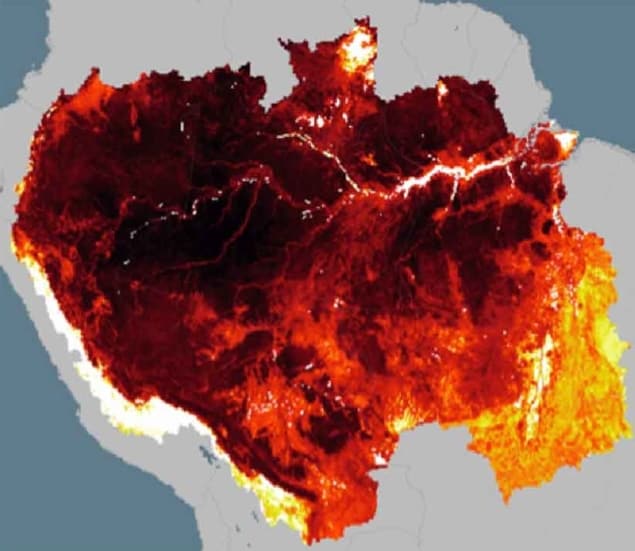
Using the Amazon as a case study, researchers have explored the tradeoffs between four ecosystem services – agricultural production, carbon storage, biophysical climate regulation, and biodiversity. Their results highlight the difficulty of managing landscapes for multiple environmental goals, but could also help guide complex decisions and balance priorities.
“Protecting eastern Amazonia is most important if the conservation priority is regulating regional climate, but protecting western Amazonia is most important if the priority is maintaining biodiversity,” writes the team in Environmental Research Letters (ERL). “There are limited opportunities to simultaneously protect both regional climate and biodiversity in the same location.”
Because the top-performing areas for the delivery of each non-agricultural service don’t align geographically, policy-makers are unlikely to succeed with a “one-size-fits-all” approach. Instead, a portfolio of solutions that strategically targets different regions to achieve different environmental outcomes may be more effective, according to the group’s analysis.
The land use simulations showed that slight shifts in preference precipitate significant differences in the Earth system impacts of agricultural expansion. To generate the results, the scientists experimentally doubled Amazonia’s agricultural footprint while varying the priority given to carbon storage, habitat provision, and regional climate regulation.
“Small increases in priority for one ecosystem service can lead to reductions in other services by as much as 140%,” says the team.
Overall, prioritizing carbon stocks appears to provide more opportunity for simultaneously protecting two or more ecosystem services. Locations that store vegetative and soil carbon intersect with areas of high relative biodiversity in the west and portions of high-performing climate regulation zones in the northeast. But the considerations don’t stop there.
“Conservation strategies and priorities are not determined by a single actor, and instead competing interests — including those of farmers, ranchers, corporations, environmentalists, indigenous peoples, and regional and national government agencies — all influence the pattern and rate of agricultural expansion and have different priorities that operate at different scales,” note the researchers in their paper.



